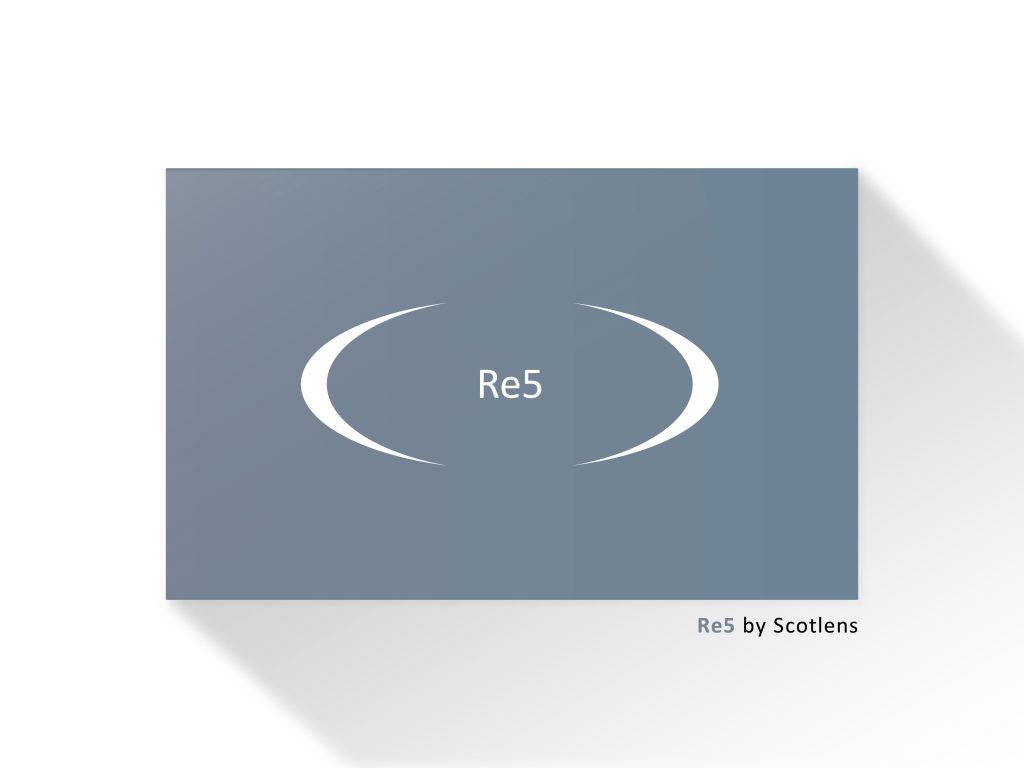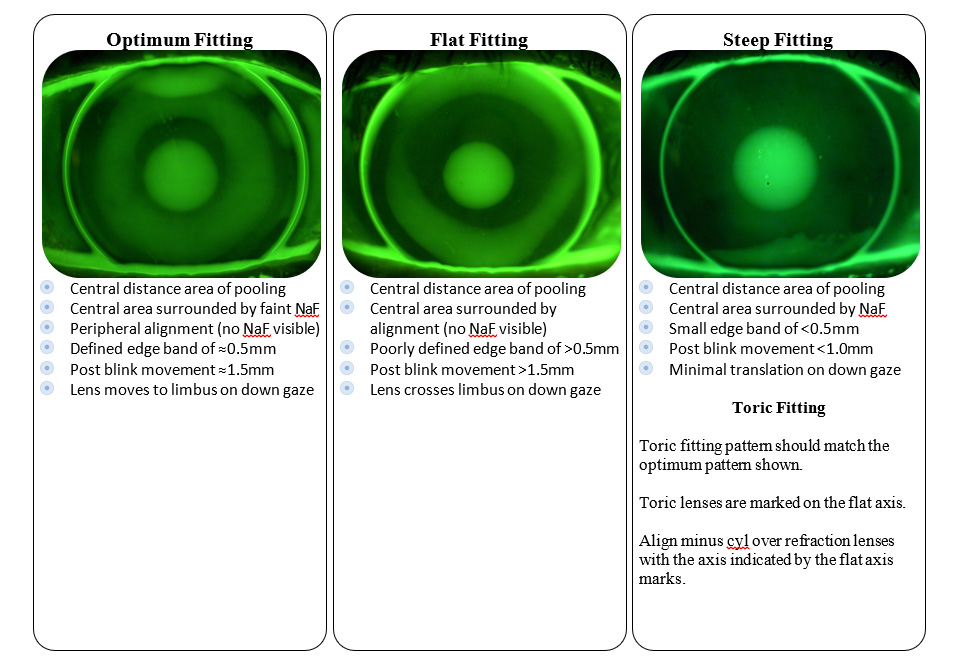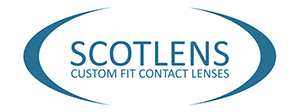Re5 | Custom fit contact lens

Re5 & Re5 Toric
Re5 | Revive your patient’s vision
A bifocal RGP contact lens designed to provide high quality vision for spherical and toric corneas with the comfort and ease of fitting of a single vision lens.
Ordering
Ordering by specification based on Initial Trial Lens Parameters below or supplying spectacle Rx, Add, BVD and Ks will generally provide an optimal fitting lens. Trial lens sets are available for spherical BOZR range
Fitting
- For new wearers instil anaesthetic to stabilise lens fit and optimise initial patient experience.
- Assess lens fit with fluorescein and yellow filter at slip lamp.
- With toric lenses note flat axis marks (- -) rotation. Align minus cyl with axis marks.

In an optimum fit lenses will move post blink vertically. Toric lenses will also appear as pictured. A lens that rides high and does not move with the lid is a high riding fit. This is usually due to lid interaction and corneal shape, altering the lens will not centre high riding lenses. Some lenses will drop and not move, especially high plus powers, reducing the lens diameter 0.5mm will reduce the weight and thickness of the lens. Lenses that are high or low riding will limit the bifocal effect. Alter the BOZR to create movement. If this is not possible mono-vision or distance CLs and over readers may give better patient satisfaction.
Assess the acuity with a distance chart after 10 minutes for lens settling. Check the lens power with spherical over refraction ensuring as much plus as possible. With toric lenses align cross-cyl with the rotation of the flat axis marks.
Perform a binocular over refraction-
With the patient looking at a distance target with both eyes maximise plus in each eye using 0.25 D increments.
Most VDU monitors are in the distance visual field requiring a +0.50 over-correction in the distance Rx or modified monovision (dominant eye DV and NV, non-dominant VDU and NV). Laptop screens are often in the near visual field. If there is a demand for VDU vision force plus in the non dominant eye until a VDU target is clear, ensure distance acuity is acceptable.
Using a realistic near text (news print N8) ensure minimum plus, presenting +0.25D increments to both eyes until target is acceptable
If necessary adjust the lens fit and incorporate the over refraction prior to giving the lenses to the patient for the trial period.
The distance zone can be increased if DV is poor and lenses de-centre slightly. The distance zone can be decreased if NV is poor and lenses de-centre slightly or pupils are small.
If either the fit or power of the lens need altered forward the information to the lab or specify the parameters for the new lens.
Patients should be made aware that there will be visual blur due to the corneal moulding effect of this back surface design. Blurring is temporary and will last for around two hours.
Perform a binocular over refraction
With the patient looking at a distance target with both eyes maximise plus in each eye using 0.25 D increments.
Most VDU will notice improved VDU vision compared to distance lenses. If there is a high demand for near vision tasks force plus in the non dominant eye until a NV target is clear, ensure distance acuity is acceptable. +0.50 over-correction in the distance Rx can also help significantly near vision.
Using a realistic near text (news print N8) ensure minimum plus, presenting +0.25D increments to both eyes until target is acceptable. If necessary adjust the lens fit and incorporate the over refraction prior to giving the lenses to the patient for the trial period.
The distance zone can be increased in 0.25mm steps if DV is poor. The distance zone can be decreased in 0.25mm steps if NV is poor when lenses de-centre slightly or pupils are small.
If either the fit or power of the lens need altered forward the information to the lab or specify the parameters for the new lens.
Re5 Initial Trial Lens Parameters
| 0.00 to 1.75 D Cyl Ks differ up to 0.35mm | Base Curve 0.1mm steeper than flat K Corneoscleral | Power -0.50 more than spec Rx sphere |
| Over 2.00 D Cyl Ks differ 0.40 or more | KFLAT BOZR -0.05mm KSTEEP BOZR +0.05mm | PowerFLAT -0.25 more than spec Rx PowerSTEEP +0.25 more than spec Rx |
Spectacle Rx should be minus cyl form. Correct for BVD is spec Rx is over +4.50.
Re5 Features & Benefits
| Feature | Advantage | Benefit |
|---|---|---|
| Distance centre back surface bifocal | Easy fit and visual assessment | Clear bifocal vision with low glare and high add effect |
| Spherical and bi-toric geometries | Power range to suit all prescription and Adds | Quality distance and near vision even with high astigmatism |
| Equivalent fitting to CC design | No change needed compared to existing lens fit | Seamless transition for patients as presbyopia develops |
| Lathe2i freeform manufacture | Optimum surface quality and parameter accuracy | Improves comfort and surface quality. Ensures repeatability |
| Optimised thickness profile | Minimised lens weight, minimises lid interaction | Improves comfort and vision |
| Unrestricted material selection | Optimum performance for patient needs | Improves surface quality and patient biocompatibility |
